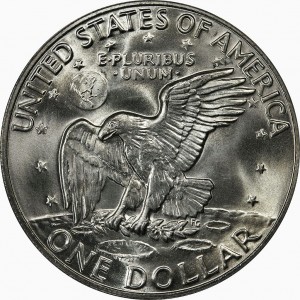We choose to go to the Moon in this decade and do the other things, not because they are easy, but because they are hard; because that goal will serve to organize and measure the best of our energies and skills; because that challenge is one that we are willing to accept, one we are unwilling to postpone, and one which we intend to win…. It is for these reasons that I regard the decision last year to shift our efforts in space from low to high gear as among the most important decisions that will be made during my incumbency in the office of the Presidency.
—President John F. Kennedy at Rice University in Houston on September 12, 1962
 On July 20, 1969, just 45 years ago, Neil Armstrong became the first man to walk on the moon fulfilling President Kennedy’s dream. We have learned from those that were there that it was a hard and did require the best of our energies and skills. It was a challenge everyone accepted and made a success in seven years as the social and political turbulence of the 1960s were in high gear.
On July 20, 1969, just 45 years ago, Neil Armstrong became the first man to walk on the moon fulfilling President Kennedy’s dream. We have learned from those that were there that it was a hard and did require the best of our energies and skills. It was a challenge everyone accepted and made a success in seven years as the social and political turbulence of the 1960s were in high gear.
Space continues to be a fascinating topic as the “final frontier” of exploration. While there are areas of Earth’s oceans that remain unexplored, more people look to the stars as the next place for human exploration.
The politics and the politics of space have changed over the years but not the fascination of space exploration. One of the oldest science fiction franchises is based in space (Star Trek) and has been the inspiration for a lot of scientific development. While there were contractors building the parts NASA needed to fly into space, today there are companies that are building their own rockets and planning their own exploration.
Space has been a theme of coins, currency, and stamps around the world. An Internet search using the phrase “space themes on coins” can show a small sample of some of the coins that featured images commemorating space exploration. But the country that landed and walked on the moon first will not be amongst that list.
Although the United States has launched more rockets containing humans into space than any other nation and was the first to walk on the moon, the only tribute to space exploration was the use of the Apollo 11 insignia as the design by Frank Gasparo on the reverse of the Eisenhower and Susan B. Anthony dollars. For the Bicentennial issues in 1975 and 1976, an image of the Liberty Bell was superimposed over part of the image of the moon. This was the idea of Dennis R. Williams who won the design competition in 1974.
Given the remembrances of President Kennedy’s assassination and the celebration of the issuance of the half-dollar bearing his likeness, maybe it would be a nice idea to commemorate this achievement with a genuine United States commemorative coin.

John F. Kennedy speaking at Rice University where he gave his famous speech declaring the U.S. will land on the moon before the end of the decade.
All other images courtesy of Wikimedia Commons.






